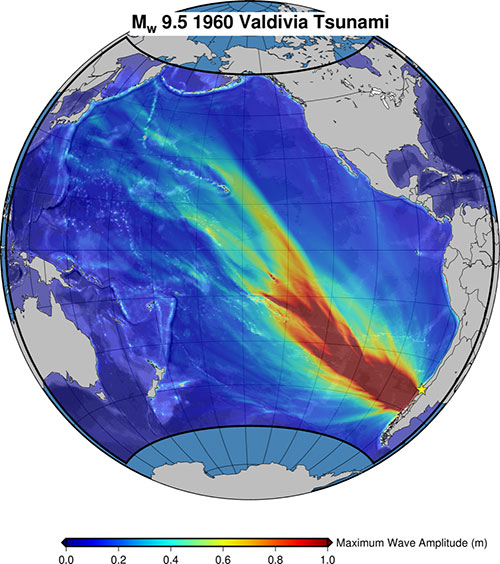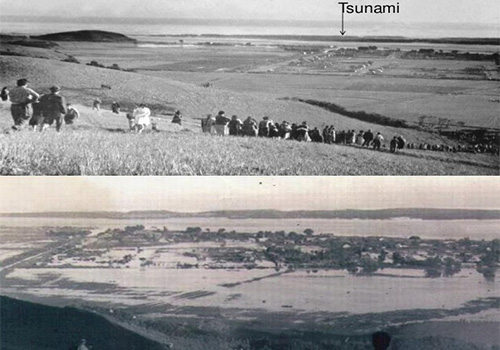 On May 22, 1960, Chile was hit by a strong earthquake that generated a global tsunami. The illustration shows the simulation of the maximum amplitudes reached by the May 22, 1960 tsunami.
On May 22, 1960, Chile was hit by a strong earthquake that generated a global tsunami. The illustration shows the simulation of the maximum amplitudes reached by the May 22, 1960 tsunami.
 Effects of the Tsunami in Chile (Before and After).
Effects of the Tsunami in Chile (Before and After).
On May 22, 1960, Chile was hit by a powerful earthquake. It was probably one of the strongest earthquakes occurred on Earth. Stefano Lorito, INGV researcher, in an interview last year (2021) explained that:
"the magnitude estimates usually have a lot of variability, particularly for an earthquake of this magnitude occurred long ago. In this case, magnitude estimates obtained with different observation types from different earthquake frequency shaking, permanent ground displacement, and tsunami ranging between Mw 9.2 and 9.6."
The earthquake - occurred in the sea offshore Chile's south coast, where the Nazca plate meets the South American plate and submerges below it at the oceanic trench - was followed by a powerful tsunami, with more than 20 meters high waves (excluding tide) on the coast of Isla Mocha, Chile, near the epicenter.
The tsunami propagated throughout the Pacific Ocean under the action of gravity, that tends to bring the sea level back to equilibrium. The highest waves hit the Chilean coast after approximately 20 minutes with more than 20-meter wave inundation heights.
Tsunami reached the Hawaiian Islands after about 15 hours, where waves exceeded 10 meters in height; the New Zealand, after about 22 hours with waves heights between 5 and 10 meters. Moreover, the tsunami after about 24 hours impacted the coast of Japan.
The sea level change, caused by the tsunami, was also recorded at British mareographs, from the Bermuda Islands to South Africa and Australia making this, the first global tsunami.
The magnitude of the Valdivia tsunami, provided a new impulse for studies and implementation of tsunami early warning systems.
Consider the case of Japan where, for the Chile tsunami, the earthquake shaking wasn't felt (there are more than 17,000km of ocean between the two nations) and the JMA didn't issue the warning, yet the tsunami generated by the earthquake traveled for many hours throughout the Pacific, and their arrival on the Japanese coast the next morning, with waves heights between 3 and 6 meters, completely surprised the inhabitants, causing extensive economic damage.

